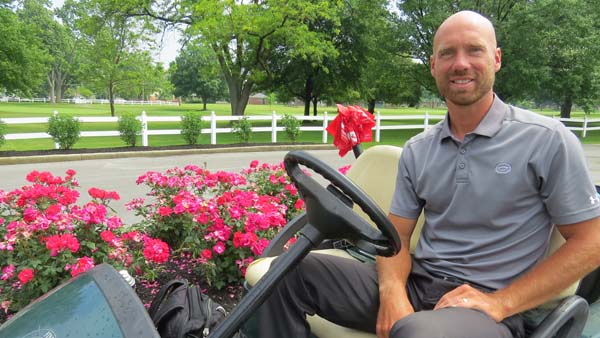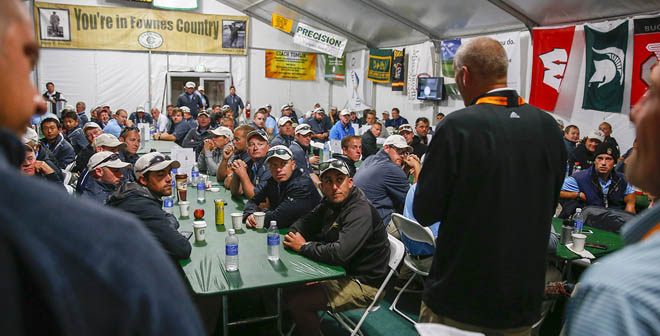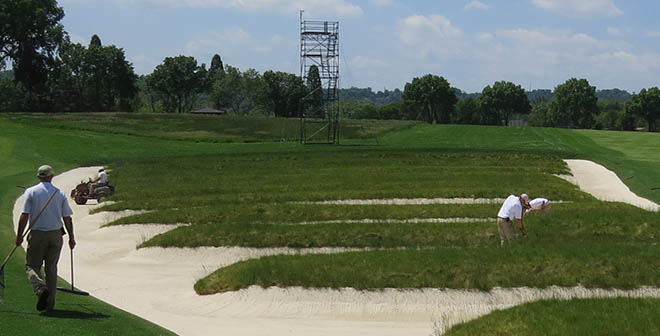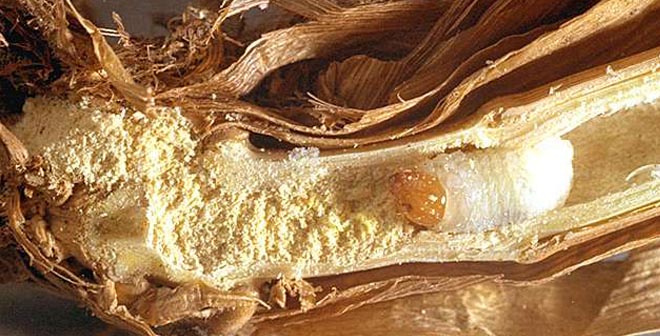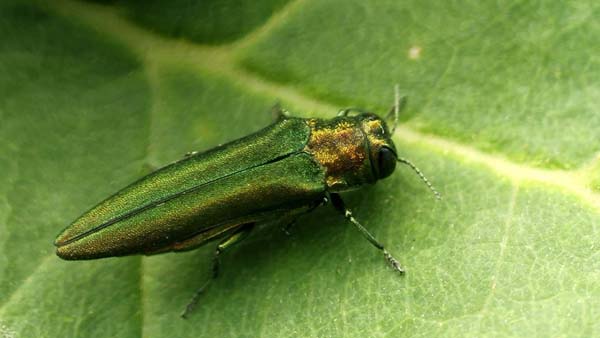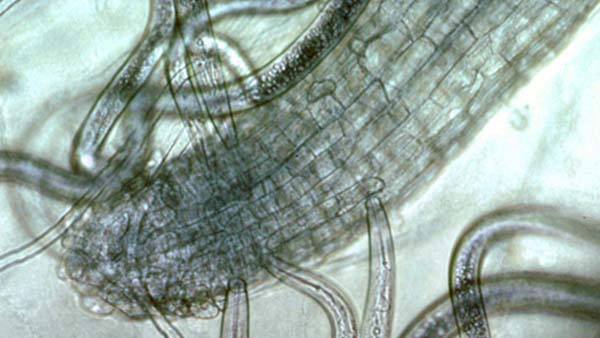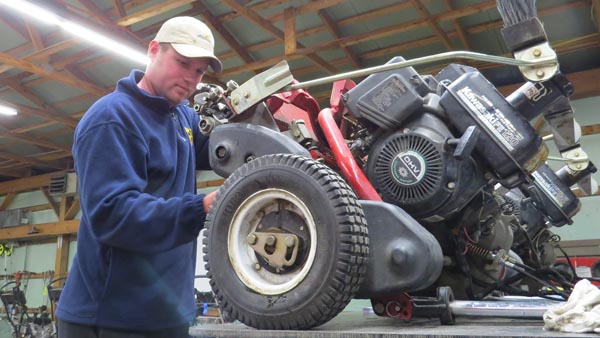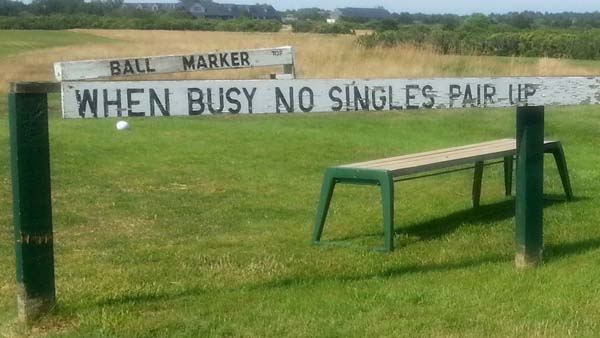

Other than that the handling of putter-gate at the U.S. Open apparently reflects the way the USGA like to do business, there was no plausible explanation of why it took officials several hours and 13 holes of play to decide whether eventual winner, Dustin Johnson, caused the ball to move prior to address on the fifth green during Sunday's final round and whether a one-stroke penalty was warranted. None. Zip. Nada. It's no one's fault, but we'll never know whether Johnson's putter caused the ball to move, or if it was an anomaly caused by an ill-timed breeze moving across Oakmont's famously slick greens that reportedly were rolling as fast as 15 feet on Sunday. All we have to go on is Johnson's word. He said he didn't strike the ball, and in the face of damning evidence, we should take him at his word. That's the way golf works. That's the way society works. Nowhere, except in USGA events, are people penalized for what they might have done. After TV cameras zoomed in beyond acceptable video quality, it looked like Johnson might have touched the ball, but the evidence was circumstantial at best, and in a court of law his case would have been laughed off by a jury faster than the O.J. verdict. "If it doesn't fit, you must acquit." With the prestige and perks, not to mention a check for $1.8 million, that come with winning a U.S. Open, it was incumbent on the USGA to get that call right, and no one - except Johnson - will ever know whether they did. USGA said as much, telling Johnson after he putted out for birdie on No. 18 that his actions "could have" caused the ball to move. Fans booed loudly on the telecast when the subject came up and Johnson's fellow players went overboard in his defense on Twitter. Still, the USGA did so much as say "we are right, and the rest of you are wrong." So much for the long-treasured beliefs of indisputable evidence and innocence until proven guilty that the rest of civilized society find so appealing. After missing a birdie putt on No. 5, Johnson stood over a short par putt when the ball moved prior to address. He immediately told his caddie and a USGA official that the ball moved, but he didn't touch it. Johnson made par and played on with the blessing of the referee. It wasn't until Johnson arrived at the 12th hole that he, and the rest of the field, learned the play was under further review. A final decision wasn't made until after Johnson walked off 18. The scenario became a farce, and even as USGA officials tried to rationalize their decision late into the night on the Golf Channel, the explanation never made sense regardless of how many times they spun it. To their credit, the USGA did a lot of things right during the 116th U.S. Open, namely setting up the course and paying due respect many times throughout the weekend to superintendent John Zimmers, his crew and his army of volunteers for producing absolutely flawless conditions. Course set up was fair, but tough. Even after rain on Thursday pulled some of Oakmont's teeth leaving many players to take target practice on Friday and Saturday, the course was its usual brutish self by Sunday. The U.S. Open's allure is that usually it is one of the few times each year the pros truly are judged against par. It's no fun week after week to watch golfers playing the latest and greatest golf ball post obscenely low scores that remind the rest of us of how challenging it can be to foil them without an arsenal of 150 volunteers double-cutting, triple-cutting and rolling greens daily. For all the things the USGA did right during the U.S. Open, it stepped in it with putter-gate. After USGA president Diana Murphy thanked Zimmers at the trophy presentation for course conditions at Oakmont, she should also have thanked Johnson for safely distancing himself from the field and allowing her association to save face, because things could have gotten ugly. What if Shane Lowry, the runaway 54-hole leader playing in the group behind Johnson, had not collapsed on Sunday? What if Lowry, or anyone else not named Dustin Johnson, leaves 18 tied for the lead, or is one shot back, only to THEN have a penalty assessed to Johnson? Does the USGA want its Super Bowl, its Daytona 500 decided by what detractors would see as no less than a conspiracy call because a player's actions might have caused a ball to move? The fallout of such a scene would have been disastrous for the USGA and felt for many years. Golf is a game that relies more than any other on tradition and sportsmanship. Losers congratulate winners, and everyone self-reports infractions. If a player breaks a rule, usually it is because they didn't know the rule in the first place. It is a system based on honesty and fair play, and it works. You don't need to look at that grainy video more than once to conclude that Johnson might have caused the ball to move, but the evidence is inconclusive. The resulting call, the only one that makes sense, would be "after further review, the ruling on the field stands."
- Read more...
- 3,125 views

